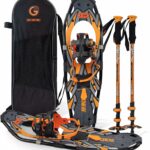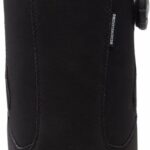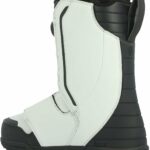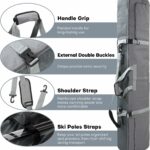Imagine soaring down a snowy mountain, your trusty snowboard carving effortlessly through the fresh powder. Now, picture that snowboard looking worn out and shabby, it’s once vibrant colors faded from all the epic rides it’s been a part of. Don’t feel bad for your beloved board though, it’s surprisingly easy to get it looking sleek and ready for another season of action. “How To Refurbish A Snowboard?” brings you all the step-by-step guidance and pro tips you need to revive your favorite winter sports gear. It’s a comprehensive guide that will empower you to bring a new lease of life to your snowboard without breaking your bank or your back. Grab your tools, it’s time to breathe new life into your board!
Understanding Snowboard Refurbishment
Hey there! Chances are, you’ve landed here because you’re curious about snowboard refurbishment. Don’t worry; you’re at the right place. Whether you’re a snowboarding professional or just hit the slopes as a hobby, understanding your gear is essential. So what is snowboard refurbishment all about?
Defining Snowboard Refurbishment
In its essence, snowboard refurbishment is the process of repairing, cleaning, and restoring your snowboard to its prime condition. Think of it like a spa day for your board! You’ll be carrying out tasks like tidying up the top sheet, mending the base, sprucing up the edges and applying a fresh layer of wax.
Benefits of Snowboard Refurbishment
So, why should you refurbish your snowboard? First, it’s a great way to prolong the lifespan of your board. Refurbishing your snowboard periodically will keep it running at its peak performance. Plus, it’s easier on your wallet; refurbishing a snowboard is almost always cheaper than buying a brand new one.
When does a Snowboard need Refurbishment
While there’s no set timetable for when a snowboard needs refurbishment, you should ideally check it after every few rides. Look out for damage on the edges and base, and signs of wear and tear on the upper side.
Equipment Needed for Snowboard Refurbishment
Kudos to you for choosing to roll up your sleeves and get into refurbishing your snowboard! To ensure your safety and effectiveness, you’ll need to gather some essential tools, materials, and safety gear.
Tools for Snowboard Refurbishment
It’s all hands on deck when it comes to refurbishing your snowboard. Essential tools include a plastic scraper to remove old wax, a snowboard edge tuner for sharpening edges, a base repair iron for patching up, and some brushes for cleaning and polishing the surface.
Materials for Snowboard Refurbishment
As for the materials, you’ll need things such as cleaning products, repair candles or P-Tex sticks for base repairs, sandpaper for smoothing out repairs, and of course, snowboard wax for that final touch.
Safety Equipment for Refurbishing a Snowboard
It might not seem dangerous, but handling sharp tools and hot wax calls for protective gear. Safety goggles, heat-resistant gloves, and a durable apron can protect you during the snowboard refurbishment process.
Inspecting the Snowboard
Before you begin the refurbishment process, do a thorough check of your board.
Examining the Top Sheet
Start by examining the top sheet for any visible damage. Look for chips, cracks, or peeling that will need repairing.
Inspecting for Edge Damage
Next, turn your attention to the edges. Any nicks or dings can affect your ride, so it’s crucial to spot and fix them.
Checking the Base for Scratches and Gouges
Lastly, check the base for any deep scratches or gouges that should be filled in. Also, keep an eye out for any dried up or flaking areas.
Prepping the Snowboard
Once you’ve noted down all the necessary repairs, it’s time to prep your snowboard.
Cleaning the Snowboard
Start by cleaning the top and bottom of your snowboard to clear away any dust, grit, or old wax.
Scraping Excess Wax off the Base
If you spot any old wax still caked on the base of your board, use your plastic scraper to gently remove it.
Wiping down the Board
Now, wipe down your board with a clean cloth to remove any residue left behind from scraping and cleaning.
Repairing the Base of the Snowboard
Deep breath – now the real work begins.
Identifying Different Types of Base Damage
Damage on the base can range from light scratches to deep gouges. Identifying them correctly will help you make the right repairs.
Filling Scratches and Gouges
For light scratches, a good waxing should do the trick. But, when it comes to deep gouges, you need to do some base welding using P-Tex sticks or repair candles to fill them in.
Sanding the Base to Even out Repairs
Finish off the base repairs by sanding it down. This evens out the repair areas and leaves the base smooth and ready for a fresh waxing.
Reviving the Edges of the Snowboard
In snowboarding, edges make a world of difference. They need to be sharp enough to cut through snow and ice.
Detecting Edge Damage
In order to detect edge damage, run your fingers along the edge and feel for any unevenness or rough spots.
Sharpening the Edges
Time to sharpen those edges using an edge tuner! Be sure to sharpen both the side-edge and the base-edge.
Smoothing out the Edges
With a diamond stone or a gummy stone, smooth out those freshly sharpened edges. They should feel smooth, but still grippy.
Reconditioning the Top Sheet of the Snowboard
Don’t ignore the top of your snowboard!
Assessing Top Sheet Damage
Take a close look at the top sheet. Check for chips, cracks or any delamination.
Repairing Chips and Cracks
Use an epoxy or a suitable repair material to fill in any chips and cracks.
Sealing and Smoothing the Top Sheet
Let the epoxy cure as instructed, then lightly sand the repaired areas for a smooth finish.
Waxing the Snowboard for a Smooth Finish
Almost there!
Choosing the Right Wax
Depending on the temperature and snow conditions, you’ll need to choose the right wax for your board. Everything counts, from your body weight to the altitude of your snowboarding location.
Applying the Wax
Get your iron on and evenly spread the wax over the base.
Scraping and Buffing the Wax
Once the wax cools, scrape off excess with a scraper. Finish off by buffing the base with a nylon brush for a smooth, shiny finish.
Final Checking and Testing the Snowboard
You’re done refurbishing your snowboard—but it’s always smart to double check your work and test it out.
Inspecting the Snowboard Post-Refurbishment
After you’ve completed all the steps, do a final check. Everything should be smooth, clean, and well-repaired.
Testing the Snowboard on a Small Slope
Next, take it out for a spin. Test it on a small slope to make sure it runs smoothly.
Observing any Persistent Issues
Keep an eye out for any persistent issues. If you still encounter problems, make a note of them and seek professional help if necessary.
Conclusion
Snowboard refurbishment is equal parts skill and art. By refurbishing your board regularly, you can ensure optimal ride performance and prolong its lifespan.
Importance of Refurbishing Snowboard
Not only does regular refurbishment save you money, but it also allows you to deeply understand your gear and its performance.
Financial Benefits of Refurbishing Instead of Replacing
Refurbishing more often than not is a more cost-effective solution than replacing your entire board. Why spend more when you can restore your snowboard’s performance for less?
Maintaining Snowboard Health for Optimal Performance
Remember, a well-maintained snowboard equals an optimal performance on the slopes. So, refurbish your snowboard regularly, and you’ll enjoy a smoother ride every time. Happy snowboarding!
- What Snowboard Bindings Should I Get? - January 23, 2024
- What Size Screws For Snowboard Bindings? - January 23, 2024
- How To Snowmobile On Water? - January 23, 2024










